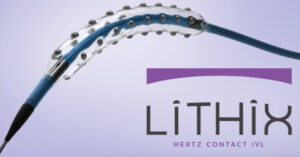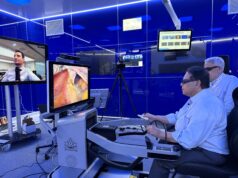 Elixir Medical has announced EU medical device regulation (MDR) CE mark approval and commercial launch of its LithiX Hertz Contact (HC) intravascular lithotripsy system (IVL) in Europe.
Elixir Medical has announced EU medical device regulation (MDR) CE mark approval and commercial launch of its LithiX Hertz Contact (HC) intravascular lithotripsy system (IVL) in Europe.
The first cases were completed by Stefano Galli (Centro Cardiologico Monzino, Milan, Italy), Eric Van Belle (Lille University Hospital, Lille, France), and Nikos Werner (Hospital Barmherzigen Bruder Trier, Trier, Germany).
LithiX lithotripsy mechanism of action to create calcium fractures is based on the Hertz Contact Stress principle and does not require an external energy source or capital equipment, delivering the expected performance of IVL with additional versatility to treat complex calcified lesions based on the unique design, Elixir Medical says in a press release.
“Lithotripsy, introduced in urology a few decades ago, has evolved to encompass mechanical and energy-based mechanisms of action to fragment calcium deposits while minimising injury to soft tissue. Energy-based lithotripsy for intravascular use was adapted to deliver effective calcium modification while preventing injury to adjacent non-calcified vessel associated with manual devices” said Motasim Sirhan, CEO of Elixir Medical. “With LithiX we created the first mechanical IVL platform capable of treating broad calcified lesion morphologies with great final outcomes, while minimising injury to adjacent non-calcified vessel.”
LithiX Hertz Contact IVL system is a transcatheter device comprised of multiple low-profile metal hemispheres uniformly distributed and integrated across the surface of a semi-compliant balloon. Under low balloon inflation pressure, the hemispheres create highly localised points of contact with calcium and amplification of force to create deep and wide fractures based on Hertz Contact Stress mechanics, while minimising vessel injury when in contact with soft non-calcified vessel tissue.
“Optimal calcium modification is very important in achieving good PCI outcomes, and LithiX Hertz Contact IVL fulfills that goal as a simple-to-use and versatile option with excellent clinical performance,” said Galli.
With this mechanism of action, LithiX HC-IVL is designed to enhance and expand calcium treatment with an optimized procedure workflow in the cath lab, positively impacting percutaneous coronary intervention (PCI) treatment.
“We are excited to adopt LithiX in our everyday practice as a very deliverable tool designed to safely modify calcified lesions, that is easy to use with high degree of precision and control,” said Werner.
“In our first cases we have seen confirmation of the recent PINNACLE study outcomes with LithiX HC-IVL in treating calcified coronary lesions with a great procedural result in eccentric and concentric calcium,” added Van Belle.
The company recently announced six-month data from the PINNACLE I study showcasing LithiX HC-IVL’s unique mechanism of action with sustained clinical outcomes.
An intravascular imaging sub-study using optical coherence tomography (OCT) demonstrated effective treatment in a broad range of complex calcified lesions, including concentric and eccentric calcium and lesions with calcium nodules. Stent expansion at the minimum stent area (MSA) location was 101.38%, 93.95% in eccentric and concentric lesions respectively. In lesions with calcified nodules, stent expansion at maximum calcium site was 102.81%.










